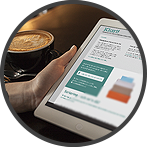Nuance the emails in your inbox and process them faster
Datum: 2025-10-22 09:39

If you receive a lot of emails, you may find that the inbox and everything it contains feel more or less like a jumble you have to trudge through every day — incessantly. One complicating aspect of emails is that they can involve such a vast variety of work and effort.
Some can be dealt with quickly, while others need to be sorted out and made into to-do tasks, as you can not possibly have time to do everything they require of you at the very moment you read them for the first time. They can also be of varying urgency, with some being ones you want to answer as quickly as possible, while others can wait a while for a response.
For you who prefer listening to reading, this post is also available as an episode of the ““Done!”” podcast:
Many emails are similar to others
Yet they often look very similar at first glance. Every day you need to get yourself an overview of what you have received and make an assessment of what each email means. But, are they really that unique and different from one another? Would you not say that many emails resemble emails you have received in the past which meant much the same thing then as they do now? And, does that not mean that you should do much the same as you usually do when you get a similar email every time you get such an email?
Nuance your inbox effortlessly
What if the assessment of incoming emails was done automatically, making it easier to determine what’s what in your inbox and to quickly separate the wheat from the chaff?
Of course, it is possible — at least to some extent.
Do this
If you want to nuance your inbox slightly and be aided in how to sort the difficult from the easy automatically, use the rules and filters available in most email apps and ‑services. Here are a few ways to do so:
- Look through the emails currently in your inbox. See what emails you find that are of the same type. They may be emails containing requests you want to respond to quickly, emails containing information you need and therefore want to see when they arrive but can delete as soon as you have read them, emails with your address copied (so-called CCs), or emails that you do not have to respond to immediately.
- Create a rule (if you use Outlook or Mail for OS X) or a filter (if you have Gmail) that labels these types of emails with a separate color or shade. For this purpose, I do not want to send the emails into a specific subfolder or set an attention-grabbing flag, but I prefer a more subtle signal, such as setting the text color in the email to a specific shade (for Outlook or Mail) or giving the email a specific category (for Gmail).
For example, receipts on purchases in my webshop will have green text, while newsletters I want to browse through quickly and maybe throw away, have grey text.
- If you cannot think of more rules to create right now than this one, do not worry. Try this one out for a while and add more if and when you determine how you would benefit from using them.
Get through it faster
If you ensure that all your emails are given elements that distinguish them from one another, or nuances, automatically, you will be able to deal with what has been sent your way both faster and with greater ease since you will get an immediate sense of what you have received at a quick glance. You will not risk keeping urgent emails waiting for your attention for longer than you would like, because you can easily see if you have received something of a particular kind. If you want to, you can deal with the emails that you know in advance will go quickly in one go. If you have been feeling weighed down by the sheer volume of correspondence to get through, this will give you some relief.
How do you do it?
What are your tricks for dealing more quickly with all the emails you receive? Although more and more communication is moving to chat, many people continue to receive an abundance of emails on a daily basis (myself included) so your tip will be much appreciated. Feel free to write to me and share!
(Speaking of sorting your emails — are you also getting messages you don’t really need? Check out more tips on how to get rid of emails and messages you do not want to spend time on!)
There are more structure tricks to discover!

If you want more tips on how to create good structure at work, there are many ways to get that from me - in podcasts, videos, books, talks and other formats.



